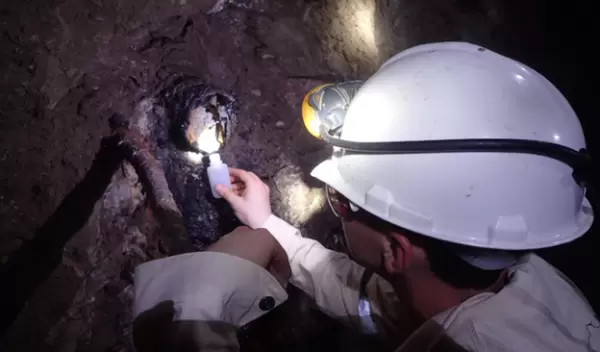
Researchers uncover life's power generators in Earth's oldest groundwater
An international team of researchers has discovered 1.2 billion-year-old groundwater deep in a gold and uranium mine in South Africa, shedding more light on how life is sustained below the Earth's surface and how it may thrive on other planets.
The findings, supported in part by the U.S. National Science Foundation, were published in the journal Nature Communications. "This research expands our thinking about the degree of connection between Earth's surface and subsurface, as well as our idea of what constitutes a habitable environment," says Julie Pett-Ridge, a program director in NSF's Division of Earth Sciences.
The project scientists are affiliated with Princeton University, the University of Toronto and other institutions.
"For the first time, we have insights into how energy stored deep in the Earth's subsurface can be released and distributed more broadly through its crust over time," says Oliver Warr, lead author of the study. "Think of it as a Pandora's Box of helium- and hydrogen-producing power."
Uranium and other radioactive elements naturally occur in rock that contains mineral and ore deposits. These elements hold information about groundwater's role as a power generator for chemolithotrophic, or rock-eating, groups of co-habiting microorganisms in the Earth's deep subsurface.
When elements like uranium, thorium and potassium decay in the subsurface, the resulting alpha, beta, and gamma radiation have ripple effects, triggering radiogenic reactions in the surrounding rocks and fluids.
In the mine, the researchers found large amounts of radiogenic helium, neon, argon and xenon, and discovered an isotope of krypton – a never-before-seen tracer of this powerful reaction history. The radiation breaks apart water molecules in a process called radiolysis, producing large concentrations of hydrogen, an essential energy source for subsurface microbial communities deep in the Earth that are unable to access energy from the sun for photosynthesis.
"Solid materials such as plastic, stainless steel and even solid rock are eventually penetrated by diffusing helium," says Warr. "Our results show that this diffusion has provided a way for 75% to 82% of the helium and neon originally produced by these radiogenic reactions to be transported through the overlying crust.”
The researchers say that the study's new insights on how much helium diffuses up from the deep Earth is a critical step forward as global helium reserves run out and the transition to more sustainable resources gains traction.


